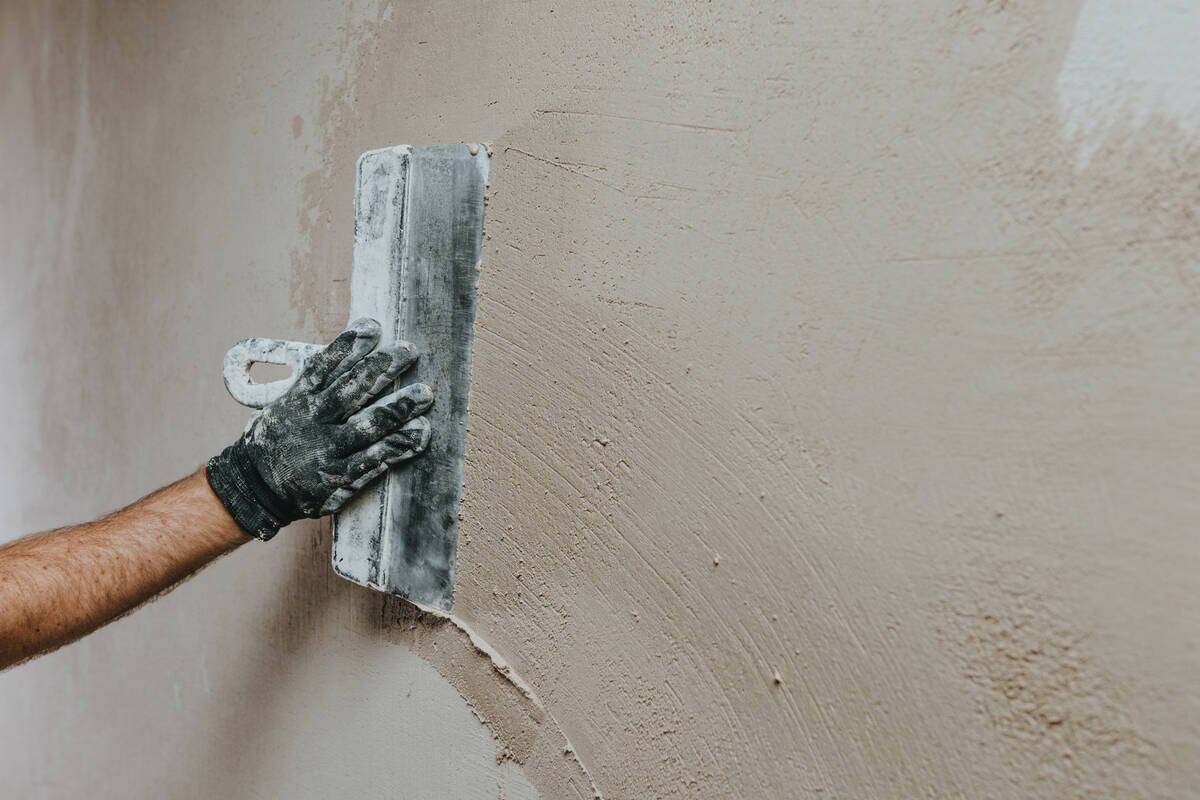2 key things to keep in mind when patching stucco
Q: My sprinklers have been spraying the side of my house for some time and the water has eaten away some of the stucco. What can I do?
A: Water spraying out at high pressure can leave a beautiful arc across the base of a house. I’d say you have two choices: Tell your friends that you paid extra for this look, or make the stucco look like new again. I’ll bet you choose the latter.
Your repair job will look great if you keep two things in mind: Make the stucco patch look reasonably good, and match the paint exactly.
Avoid premixed stucco because often it’s just not the right texture. It tends to shrink, crack and leave an uneven appearance.
Instead, buy a large bag of stucco (less than $15) and mix it with water until it has the consistency of paste. Make sure it’s not too firm or too loose.
The tools you’ll need are a small pointing trowel, a sponge trowel, an old stiff paint brush and perhaps a whisk broom.
Scrape off the damaged stucco until you reach a solid base; this is where you’ll apply the new stucco.
When I have only a small hole to fill, I stuff some stucco into it then use a stiff paintbrush to flick more stucco on it. This creates a rough texture.
For large areas, I use a concrete trowel to apply the stucco and make it level. That’s the easy part. The hard part is getting it to look like the surrounding stucco. Since different workers leave different finishes, you’ll need to experiment until you get the right look.
If the finish is sand (small, granular and uniform), you have it easy. Just level it out and you’re done. If you have a rougher finish, mix up a batch of soupy stucco then drag it across the leveled stucco, creating a rougher finish.
If the finish is rougher yet, sink the pointing trowel just into the top of the stucco and pull it away from the wall. The idea is to raise some bumps without pulling out the entire stucco patch.
Let these raised bumps harden for a few minutes and run the trowel across the top to knock off the points. This should leave a fairly rough, even texture with no sharp points.
You can also use a sponge trowel. After you level the stucco, use this tool to swirl the stucco around, leaving a sandlike finish.
You can also add a little more stucco, let it stiffen up then swirl it around, which will create a rougher finish. It’s the same idea using a whisk broom: Swirl it around or stab it into the stucco and then pull it out.
Even if the stucco doesn’t appear exactly as you’d hoped, mask it with stucco paint that matches the surrounding color. Paint stores and home centers can match the color, but you have to bring in a sample at least the size of a quarter.
Walk the perimeter of the house looking for a good sample. I usually take off the cable box cover or the cover to the electrical panel as these items should have the color you need.
Make sure the store employee dabs a drop of paint onto your sample and lets it dry. If you can see where the paint was dropped, the color needs adjustment. The paint costs about $30 a gallon and can be applied with a thick stucco roller.
Lastly, adjust the sprinkler heads or move the sprinklers away from the house.
Mike Klimek is a licensed contractor and owner of Las Vegas Handyman. Send questions to handymanoflasvegas@msn.com or 4710 W. Dewey Drive, No. 100, Las Vegas, NV 89118. Visit handymanoflasvegas.com.
Do it yourself
Project: Repair a stucco patch
Cost: Under $50
Time: Under 1 hour
Difficulty: ★★★























